Comoros Flag Meaning
Four horizontal stripes of yellow, white, red, and blue with a green triangle at the hoist containing a white crescent and four white stars, representing the four islands, Islamic faith, and the pan-African heritage of this Indian Ocean archipelago.
- Continent
- Africa
- Adopted
- 2002
- Ratio
- 3:5
- Colors
- green, white, yellow, red, blue
- Designer
- Unknown
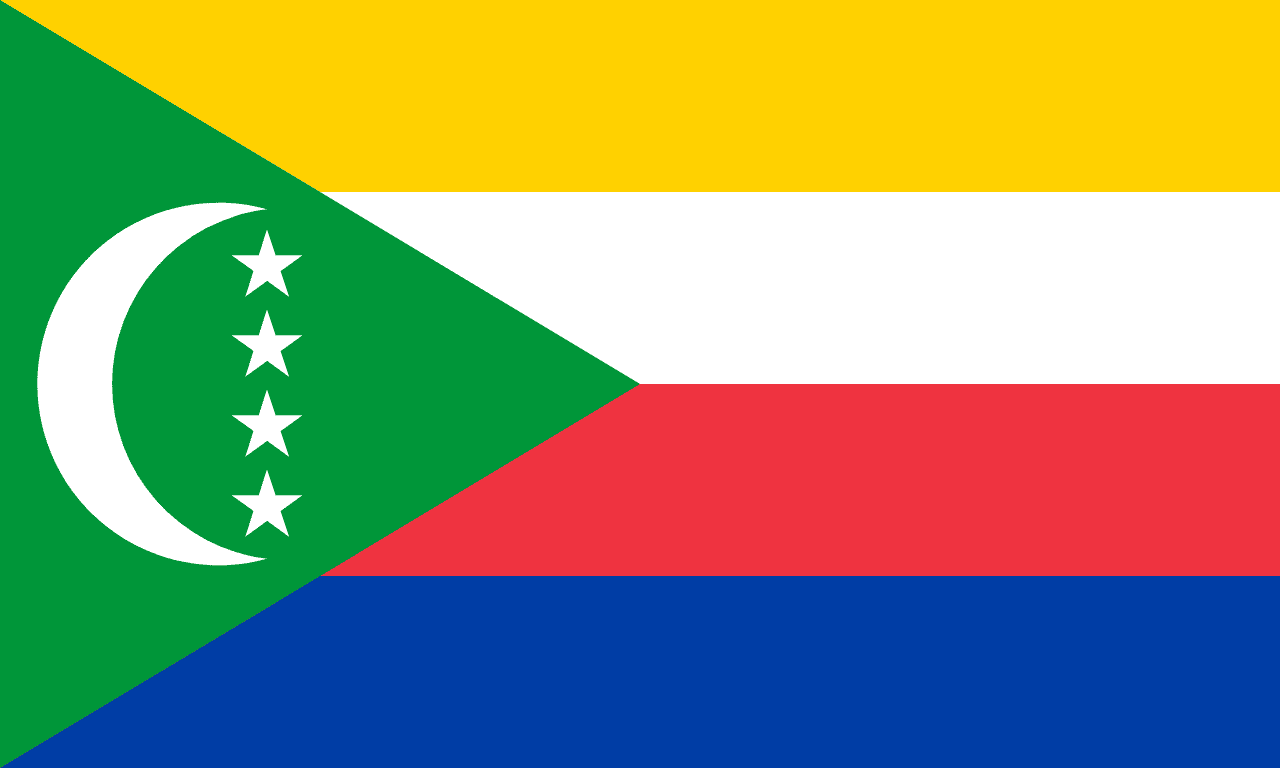
Symbolism
Green Triangle: Represents Islam, the religion practiced by over 98% of Comorians, and also symbolizes the lush vegetation and natural beauty of the volcanic islands that make up the archipelago.
White Crescent: Represents the Islamic faith that unites the Comorian people, symbolizing the religious and cultural identity that has shaped the islands' society, law, and traditions for centuries.
Four White Stars: Represent the four main islands of the Comoros archipelago: Grande Comore (Ngazidja), Anjouan (Nzwani), Mohéli (Mwali), and Mayotte, though Mayotte remains under French administration.
Yellow Stripe: Represents Mohéli island, symbolizing one of the three islands that form the Union of the Comoros and the golden sandy beaches and coral reefs that surround the archipelago.
White Stripe: Represents Mayotte, acknowledging the fourth island despite its continued status as a French overseas territory, symbolizing the aspiration for eventual reunification of all four islands.
Red Stripe: Represents Anjouan island, symbolizing the struggle for independence and the blood shed by those who fought for freedom from colonial rule and national sovereignty.
Blue Stripe: Represents Grande Comore island and the Indian Ocean that surrounds the archipelago, symbolizing the maritime heritage and the waters that connect the islands to Africa, Arabia, and Madagascar.
History
- Pre-1500s: The islands were settled by various peoples including Africans, Arabs, Persians, and Malays, creating a unique Comorian culture that blended African, Arab, and Indian Ocean influences with Islam as the unifying religion.
- 1500s-1841: Portuguese explorers arrived, followed by Arab sultanates that controlled trade and governance, with the islands serving as important stops along Indian Ocean trading routes between Africa, Arabia, and Asia.
- 1841-1975: France gradually established colonial control over all four islands, creating the colony of Mayotte and Comoros, introducing French administration, language, and economic systems while maintaining Islamic law in personal matters.
- July 6, 1975: Three islands (Grande Comore, Anjouan, and Mohéli) declared independence as the Comoros, while Mayotte voted to remain with France, creating the ongoing territorial dispute.
- 1975-1995: Political instability dominated the early independence period, with over 20 coups or attempted coups, including several led by French mercenary Bob Denard, earning Comoros the nickname 'coup-coup islands.'
- 1997-2001: Anjouan and Mohéli declared independence from the Comoros federal government, leading to separatist crises that threatened to break apart the young nation.
- December 23, 2001: A new constitution established the Union of the Comoros with a rotating presidency among the three islands, aimed at preventing future separatist movements and ensuring equal representation.
- January 7, 2002: The current flag was adopted to represent the new constitutional arrangement, with colors representing each island and symbols reflecting the Islamic identity and unity aspirations.
- 2002-Present: The flag has represented ongoing efforts to build stable democratic institutions, develop the economy, and maintain unity among the three islands while dealing with poverty and limited resources.
Trivia
- Comoros is one of the world's poorest countries and has experienced more than 20 coups since independence in 1975, earning it the unfortunate nickname 'the coup-coup islands.'
- The flag represents an archipelago that produces about 80% of the world's ylang-ylang, an essential oil used in high-end perfumes, making it crucial to the global fragrance industry.
- Mayotte, represented by the white stripe, voted to remain with France and is now a French overseas department, creating ongoing tensions with the Comoros government.
- The Coelacanth, a prehistoric fish thought extinct for 66 million years, was rediscovered off the Comoros coast in 1938, making the islands famous in scientific circles.
- Comoros has one of the world's highest population densities, with over 800 people per square kilometer on some islands, creating pressure on limited land and resources.
- The flag flies over a country where three official languages are spoken: Comorian (Shikomoro), French, and Arabic, reflecting the islands' diverse cultural heritage.
- Mount Karthala on Grande Comore is one of the world's largest active volcanoes, with recent eruptions affecting agriculture and forcing evacuations of nearby communities.
- The country has no railways and limited road infrastructure, with transportation between islands relying on boats and small aircraft, reflecting development challenges.
- Comoros is entirely Muslim except for a tiny Christian minority, making it one of the most religiously homogeneous countries in the world.
- The flag represents a country where the economy depends heavily on remittances from the diaspora, particularly Comorians living in France and other countries.
- Traditional Comorian architecture features houses built from volcanic stone and coral, with distinctive designs adapted to the tropical climate and volcanic terrain.
- The islands have no universities, forcing students to study abroad, primarily in France, Madagascar, or other African countries, creating brain drain challenges.
- Comoros citizenship can be obtained through investment, with the program generating revenue for the government but also creating controversy about citizenship-for-sale practices.
- The flag flies over a country severely affected by climate change, with rising sea levels and increased cyclone intensity threatening the low-lying islands.
- Despite being one of Africa's smallest countries by population (under 900,000 people), Comoros is a member of the African Union, Arab League, and Organisation of Islamic Cooperation.
Related Countries
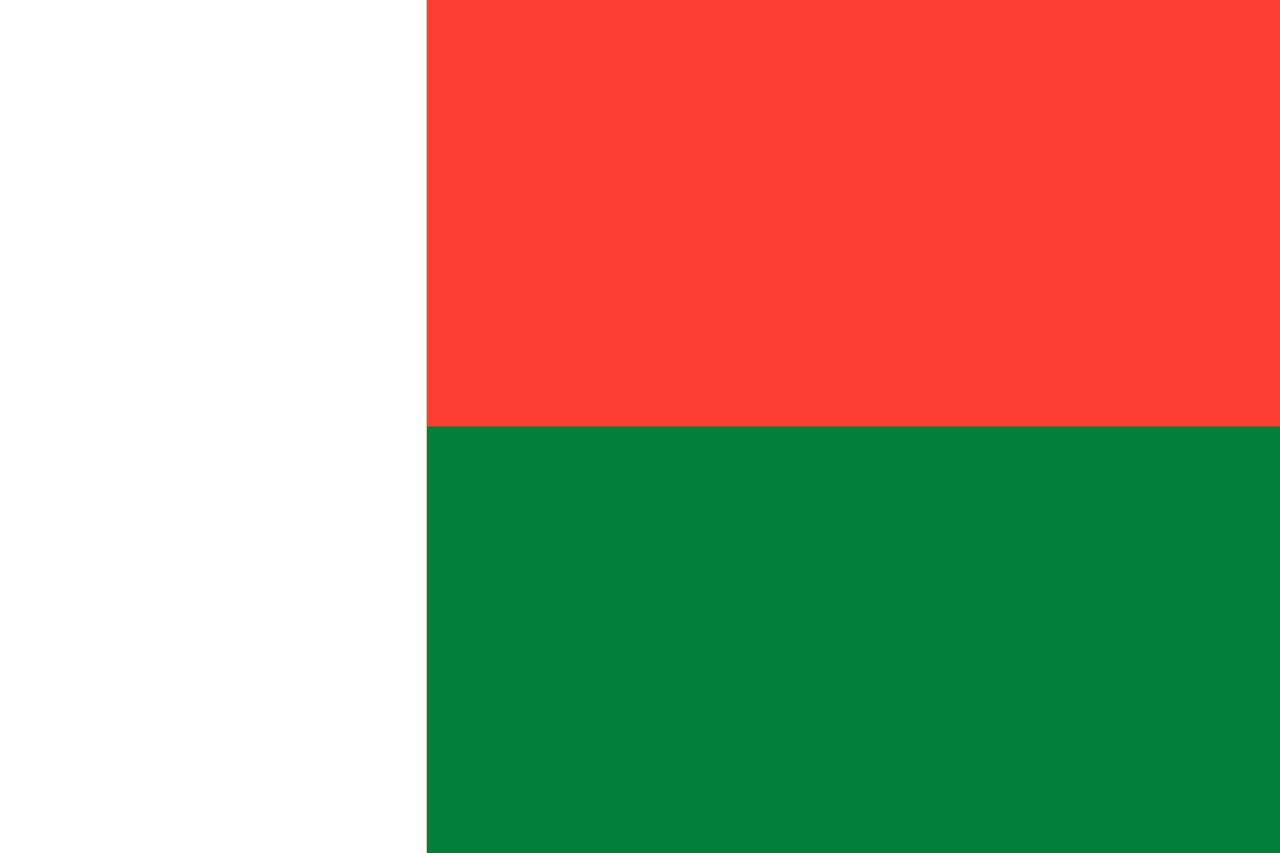
Madagascar
Africa
A white vertical stripe on the hoist side with two horizontal stripes of red and green on the fly side, representing the diverse heritage of the Malagasy people and the unique natural environment of the world's fourth-largest island.
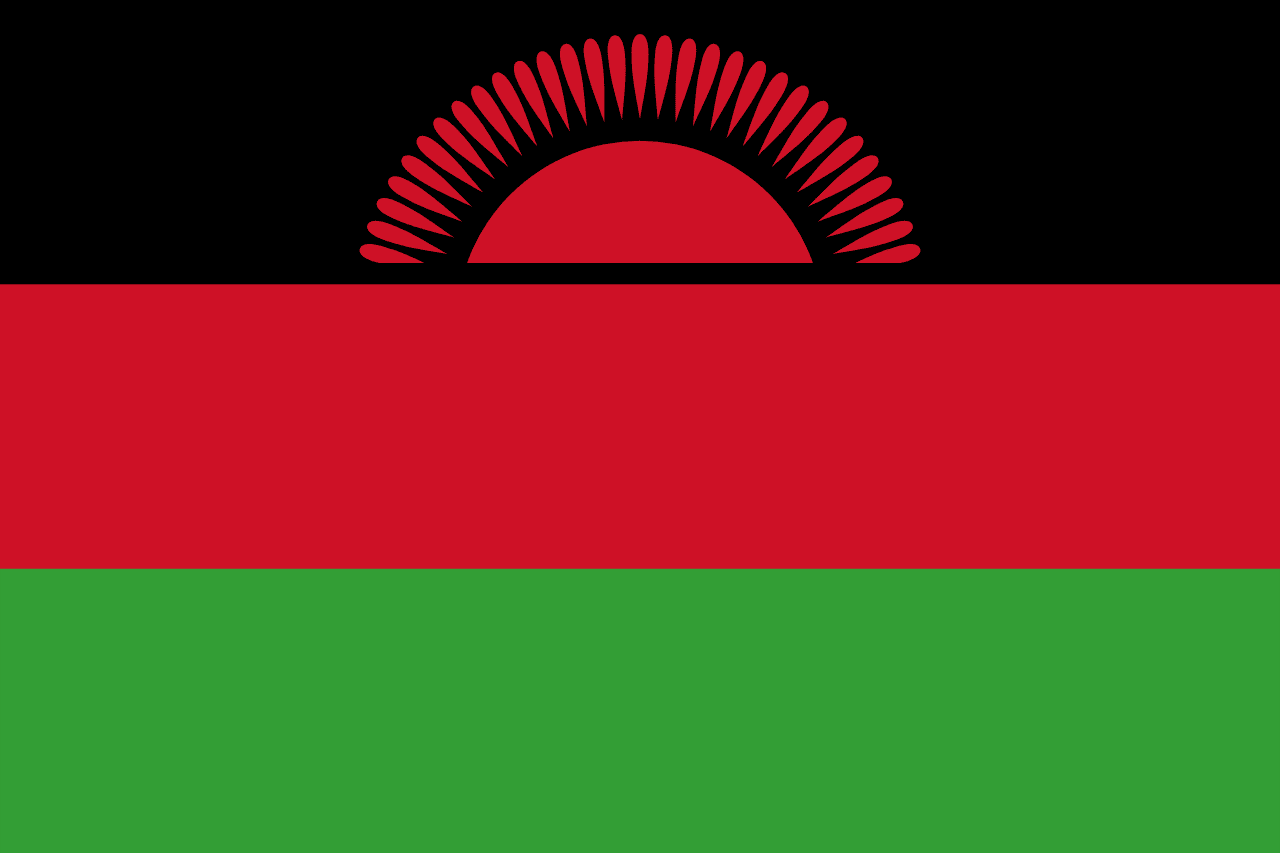
Malawi
Africa
Three horizontal stripes of black, red, and green with a red rising sun in the upper left corner, representing the African people, the blood of freedom fighters, the land's fertility, and the dawn of freedom and hope.
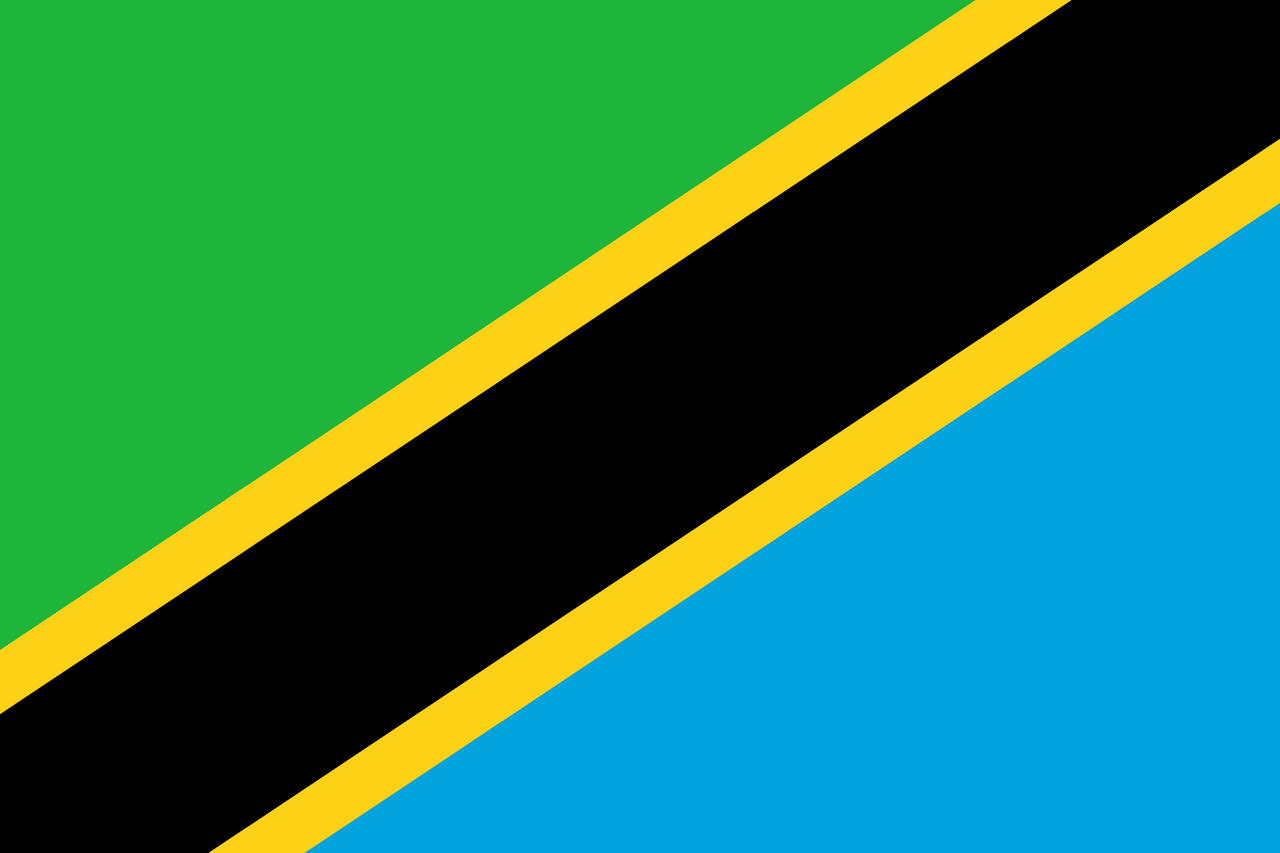
Tanzania
Africa
A green triangle in the upper hoist, a blue triangle in the lower fly, separated by a diagonal black stripe bordered by yellow stripes, representing the country's agriculture and forests, mineral wealth, the African people, and the Indian Ocean, symbolizing the union of Tanganyika and Zanzibar.
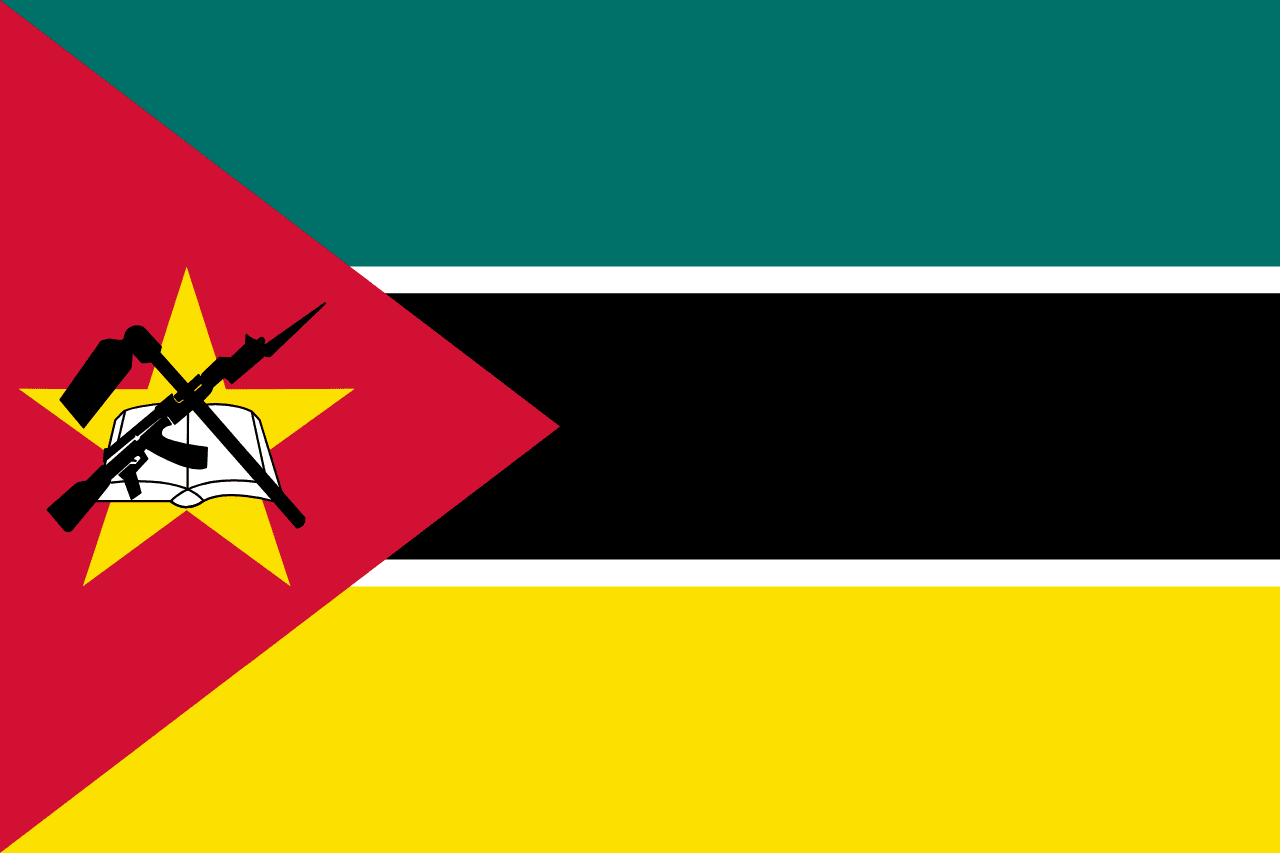
Mozambique
Africa
A horizontal tricolor of green, black, and yellow, separated by white fimbriations, with a red triangle at the hoist bearing a yellow star, a book, a hoe, and an AK-47 with bayonet. The flag uniquely features a modern weapon as a national symbol.
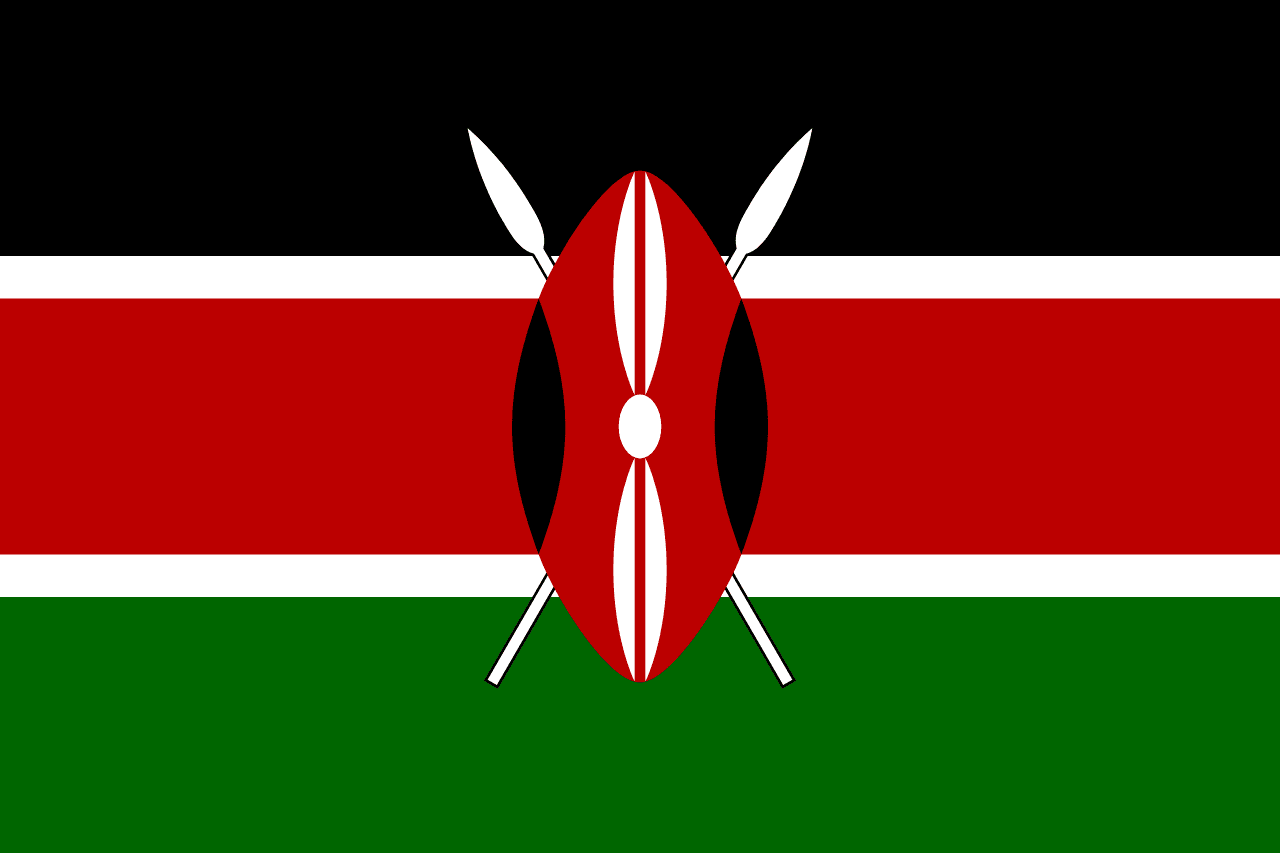
Kenya
Africa
Three horizontal stripes of black, red, and green separated by narrow white stripes, with a traditional Maasai shield and two crossed spears centered on the flag, representing Kenya's struggle for independence and the defense of freedom.
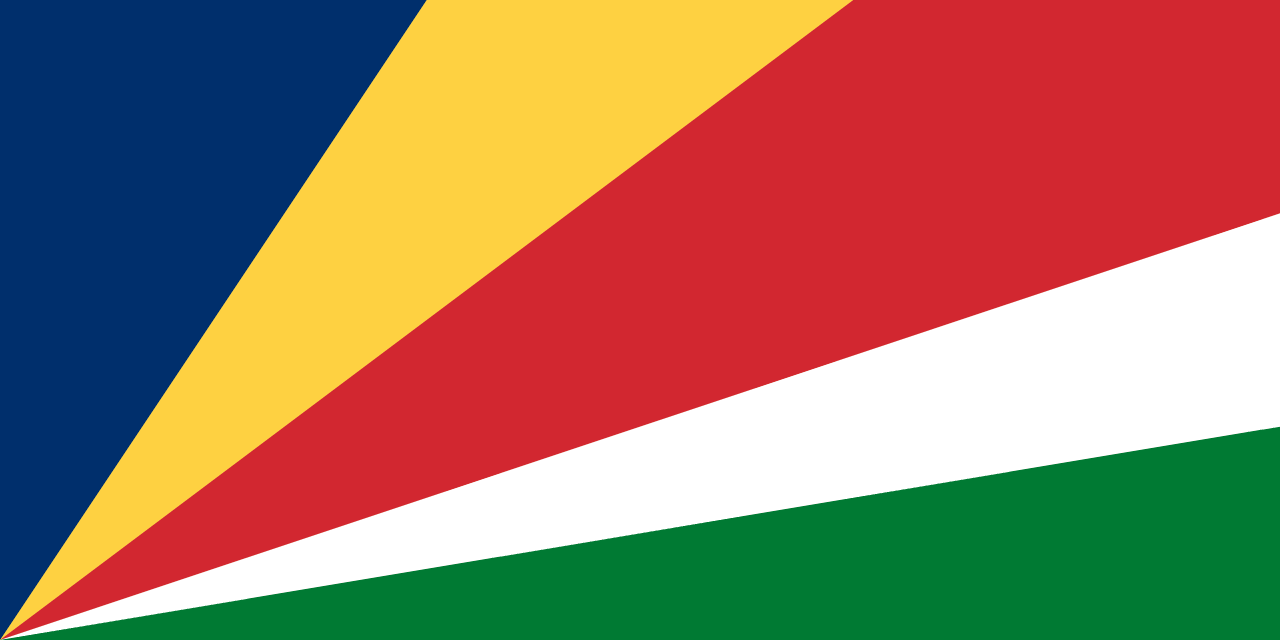
Seychelles
Africa
A flag of five oblique bands radiating from the bottom hoist corner: blue, yellow, red, white, and green. The design symbolizes a dynamic, forward-looking nation embracing unity and diversity.